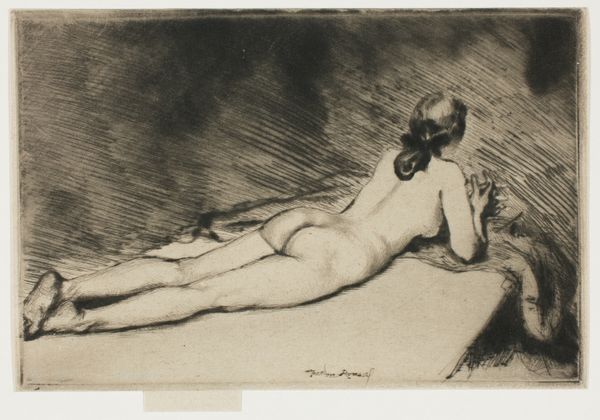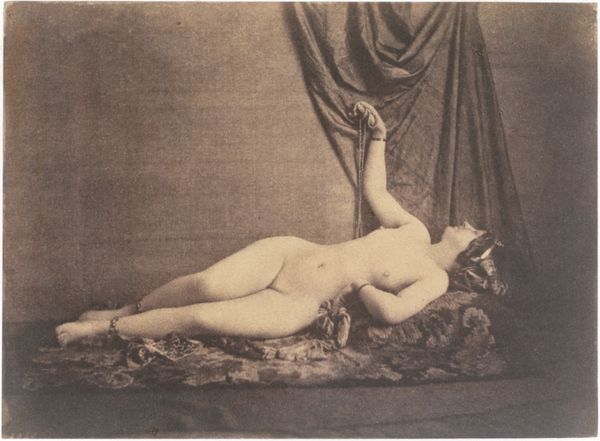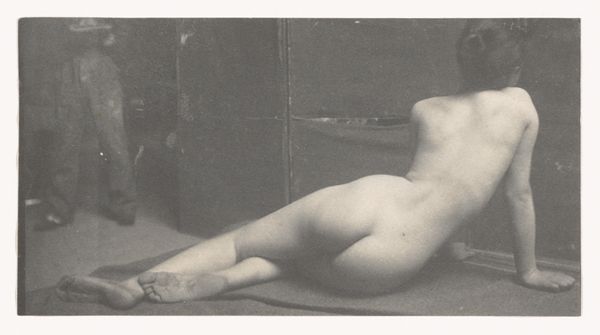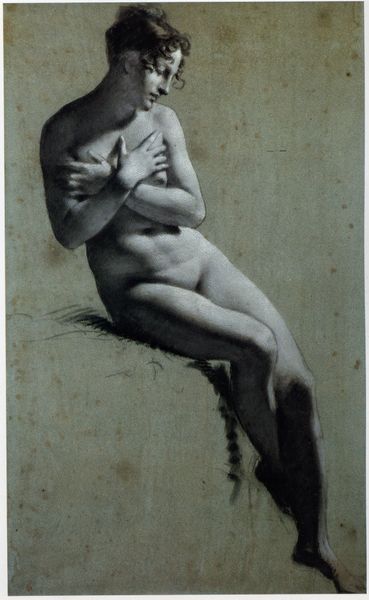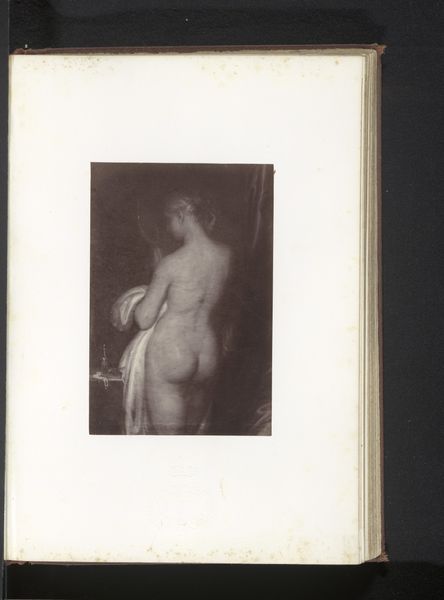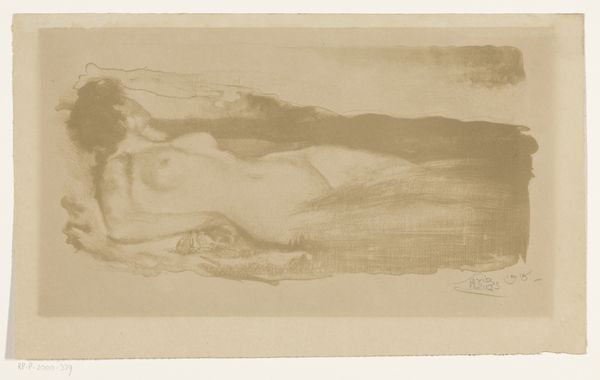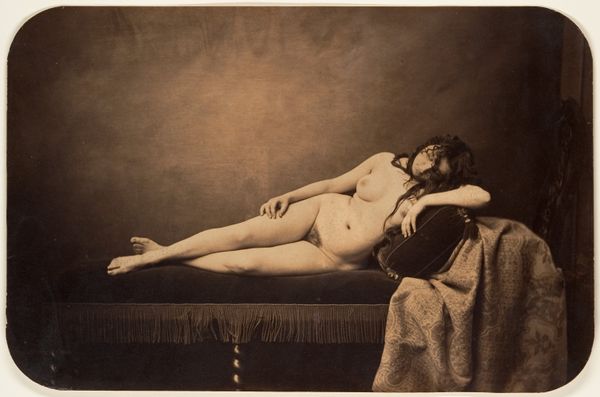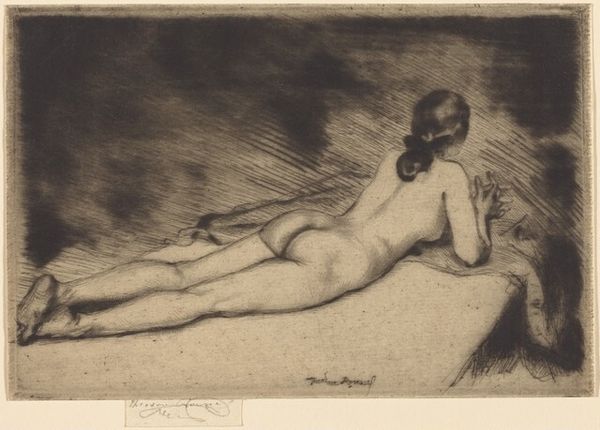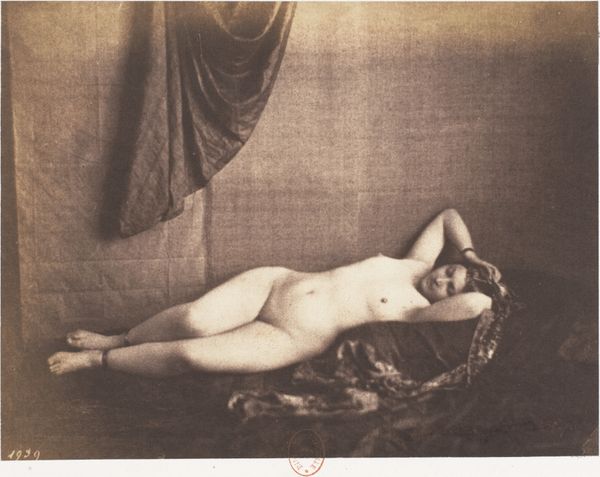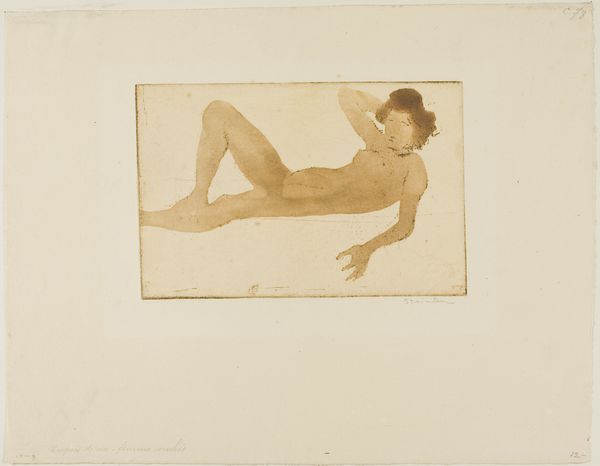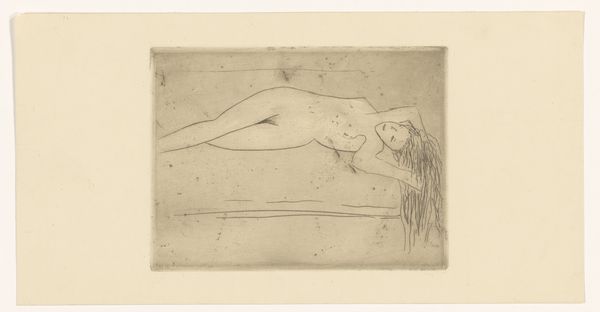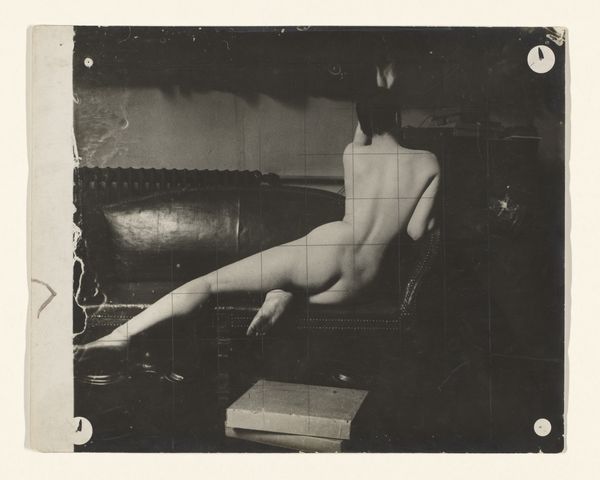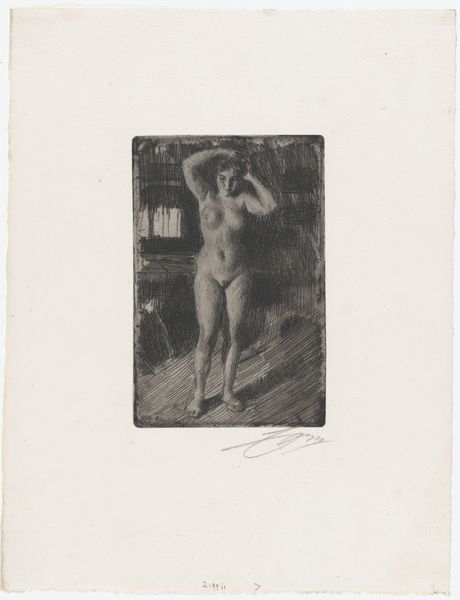
drawing, print, paper, graphite
#
drawing
# print
#
figuration
#
paper
#
pencil drawing
#
graphite
#
academic-art
#
nude
#
graphite
#
realism
#
monochrome
Dimensions: 96 × 146 mm (image); 101 × 150 mm (plate); 108 × 150 mm (sheet)
Copyright: Public Domain
Editor: Theodore Roussel's "Nude Figure Lying Down," created in 1906, a graphite drawing on paper. I'm struck by the intimacy of the scene, almost like a private glimpse into a quiet moment. It seems almost… academic. How do you see it, in its historical context? Curator: That academic feel is key. Consider the art world of 1906. While avant-garde movements like Fauvism were emerging, academic art still held considerable sway, particularly within institutions and among certain audiences. This drawing plays into that established tradition of the female nude, but how does it subvert or engage with expectations around the female gaze and subjecthood, within the conventions of the time? Editor: So, it’s like he's acknowledging the established norms, while perhaps trying something different? What was the cultural understanding of female nudity like back then? Curator: Exactly. Think about the role of the nude in art history – often associated with classical ideals, morality tales, or simply as an object of male pleasure. By the late 19th and early 20th centuries, artists and critics started questioning these traditional roles, even if the challenge wasn’t always explicit. The figure here is presented naturally, in a private moment. How does that presentation impact how it may have been received in comparison to artwork within the salon or academic context? Editor: That makes a lot of sense. I guess I had been considering how it's received today but hadn't taken into account those contextual norms of 1906, and who may have been given access or chosen to consume images of this kind. It definitely gives me a new perspective to think about. Curator: Indeed. It is also necessary to look into the market for prints and drawings versus the art market more broadly. How might the market forces impacted the social meanings this imagery? Editor: Thanks, I am going to delve into it more with that in mind! It’s fascinating to consider how deeply intertwined art is with the society it reflects and shapes. Curator: Absolutely. Seeing art as part of a bigger cultural and institutional system offers invaluable perspectives.
Comments
No comments
Be the first to comment and join the conversation on the ultimate creative platform.
